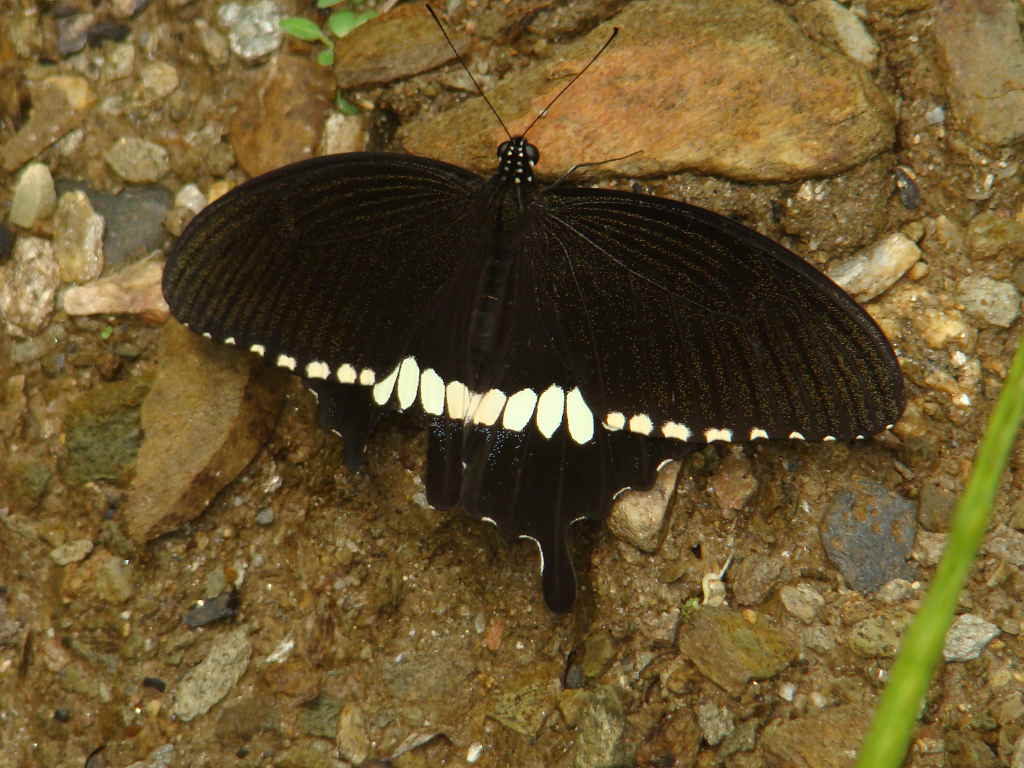
Papilio polytes (Common Mormon)
Papilio polytes, also known as the Common Mormon, is a graceful and adaptive butterfly species commonly found in the Great Himalayan National Park (GHNP). Renowned for its striking appearance and fascinating mimicry, this butterfly adds a vibrant touch to GHNP’s rich biodiversity.
| Common Name | Common Mormon |
| Scientific name | Papilio polytes |
| Family | Papilionidae |
| Description |
The male Papilio polytes is black with white spots on the hindwings, giving it a refined, understated look. However, it’s the female that steals the spotlight with her polymorphic appearance. Female Papilio polytes often mimic the toxic and unpalatable Pachliopta aristolochiae (Common Rose), an example of Batesian mimicry that helps deter predators. This clever disguise enhances the butterfly’s survival in the wild. In GHNP, Papilio polytes is typically seen between elevations of 800 to 2,000 meters. It frequents forest edges, flowering shrubs, and sunny trails where nectar-rich blossoms grow in abundance. The butterfly’s graceful flight and frequent visits to blooming plants make it a favorite among nature lovers and photographers. This species breeds on plants from the citrus family (Rutaceae), particularly wild lime and curry leaf trees. After hatching, the larvae resemble bird droppings—another smart camouflage tactic—before maturing into vibrant adult butterflies. Papilio polytes plays an important ecological role as a pollinator, helping maintain floral diversity within GHNP. Its presence is also a strong indicator of a healthy environment. Visitors to the park often spot this butterfly fluttering along with other swallowtails, including the equally stunning Papilio polyctor. To further explore GHNP’s rich butterfly diversity, check out our guides on GHNP Fauna or explore related species such as Graphium sarpedon. |



